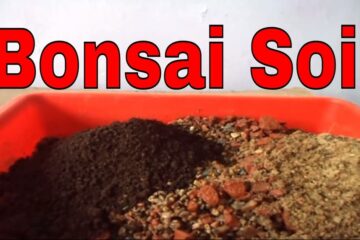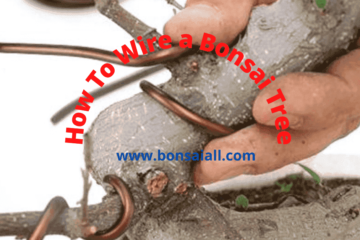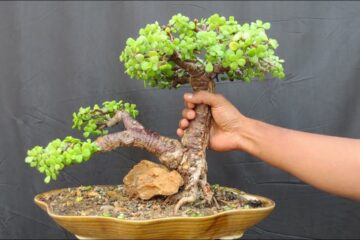You’ve probably seen these trees without even realizing they were there – they grow tall and very straight and can stay that way even after being cut down and replanted. They look especially beautiful during the wintertime when their leaves fall off, leaving only the branches behind to remind you of how majestic they once were. But did you know that bald cypress trees are native to the southeastern United States? Or that this type of tree can be found on almost any type of land as long as it’s in the right region? Here are some more bald cypress tree problems and facts you probably didn’t know!
Bald Cypress tree Facts
Content Overview
Here some bald cypress tree facts below
Bald Cypress deciduous Conifer tree
The bald cypress is a deciduous conifer tree. Its foliage turns a vivid orange-red in autumn before falling off. Other trees similar to bald cypress include water tupelo, which grows along coastlines, and pond cypress, which has drooping branches that give it a weeping appearance. Both of these are broadleaf evergreens, unlike bald cypress.
The bald cypress is a deciduous conifer, meaning that its needle-like leaves change from green to golden yellow in autumn. It is one of only two conifers found in eastern North America and can live for 500 years or more. In summer, it produces small flowers which produce winged fruits containing seed cones.
Another name for bald cypress is swamp cypress, as it prefers to grow in swamps. It’s native to eastern North America and has been used for timber since colonial times, but it is now threatened by commercial harvesting. A mature tree can live for over 400 years and grow as tall as 90 feet (27 meters). Due to habitat loss, bald cypress has been declared an endangered species in some states.
Bald Cypress tree leaves are flat and scale-like
The leaves of bald cypress trees are flat and scalelike and can be reddish-purple. When they are mistaken for true firs, the leaves of these trees are markedly different.
Cypress trees’ flat, scale-like leaves are distinguishable from the leaves of other tree species. When compared to true fir trees, you’ll notice that they’re much thinner and more flexible than fir needles, which typically measure between 1/2 inch and 2 inches long.
If you’re in a region where bald cypress trees grow, you may find that they are very common in areas where water is abundant. They’re one of many species of deciduous conifers, which means that their leaves change colors and fall off during warmer months. Most deciduous conifers live at higher elevations and have a shorter growing season than evergreens.
The Bald Cypress tree has fan-shaped cones
The cones grow on long stems and they have a fan-shaped or frondlike appearance. Male cones produce pollen while female cones are seed-bearing.
These trees grow very slowly and need about 100 years to reach maturity. Though it’s usually short in height, mature Bald Cypress trees grow up to 60 feet (18 meters) tall with a spreading canopy that can top 120 feet (37 meters).
If cold temperatures from a recent storm caused some of its leaves to die, they will grow back in two weeks or less. The bald cypress is an exception to the many trees that lose their leaves in the winter, instead of shedding their branches.
Old woody stems are retained by each tree, growing to enormous sizes and looking like gnarled branches with peeling bark. In summer, green cones hang from these fronds and develop into winged seeds that resemble miniature helicopters.
This is a stately tree
The bald cypress is a stately tree, and it’s native to North America. It grows primarily in swamps and along rivers with soft, easily-eroded soil. The trees were essential to Native Americans as they provided clean drinking water, food (nuts), and medicine (resin). Nowadays, many people like growing these trees in their backyard.
The bald cypress tree is one of just two coniferous evergreen trees native to North America. It’s associated with water, which is why you can see it so often near rivers and streams in marshes. Native Americans used its sap as a cure for rheumatism, while settlers soaked its roots in order to alleviate urinary troubles and dysentery.
The Bald Cypress tree Likes wet places
Bald cypress trees are usually found in wet and swampy areas. Swampy areas are generally very soft and boggy with a lot of water, which allows for plenty of nutrients to flow around to help new trees grow.
This tree can easily survive in shallow water and even keep its roots intact while being flooded with several feet of water. The bald cypress tree can also withstand several feet of snow at once on top of it, making it an excellent forest species for places that experience heavy winter conditions.
The Bald Cypress tree can grow on poor soil
This tree has deep, thick roots that can easily grow in poor soil and make their way to groundwater. It’s also known for its shade on hot days when other trees may dry out and die.
Despite that, if you’re looking for a showy yard tree, bald cypress might not be your first choice. It grows slowly and doesn’t turn bald like its name suggests until it reaches 60 or 70 years old.
Though bald cypress trees can survive in poor soil, they’re not picky about their environments. They are located in the southern part of the United States and are drought-resistant and fire-resistant.
The seeds are windborne, so bald cypress populations exist wherever these trees land and grow successfully.
Bald Cypress tree-like shade as well as sun
Although they like shade as well as sun, they can withstand full sun during all seasons of growth, unless summers are exceptionally hot.
While they prefer moist soils, they also grow in poor, rocky soil. Bald cypress trees are important to water quality in many parts of their range because of their ability to thrive in swamps with low pH. Their extensive root systems hold soil and reduce erosion.
In spite of all these, these trees also make suitable houseplants. They are ideal for offices and homes as indoor plants because they tolerate low light conditions well. You can keep them in lower-light locations such as patios, terraces, or semi-enclosed rooms.
Warmer climates typically have a handful of days where the temperature stays below freezing (zone 8 or higher), these bald cypresses can be grown outdoors year-round in rich, moist soils.
They produce cypress knees when they grow in swampy conditions
On some bald cypress trees, knobby knees protrude from their trunks. This is a term for cypress knees. They often grow where tree roots rise above the water and can form a dense mat over time.
The knees grow as individual trees do—and they continue to do so as long as there is access to sunlight, oxygen, and nutrients in swampy conditions.
Their spongy appearance comes from many air cavities in its bark which aid in water retention and reduce transpiration loss due to evaporation.
Cypress trees typically have knees, a trait that typically aids them in their swampy habitat. Without them, cypress trees would rot away.
But they have more than just utilitarian value—they can also be an aesthetic asset to properties where they grow, especially in landscaping where they are used as hedges and foundation plantings.
The Bald Cypress tree is a long-lived species
These trees live a long time, up to 400 years, which means they can be a part of many generations. In terms of height, they range from 75-150 feet but some trees grow 300 feet or more.
And finally: Cypress trees are one of only two conifer species that produce cones!
The other is pine. (Gymnosperms also have cones) These trees live a long time, up to 400 years, which means they can be a part of many generations.
A tree with a long lifespan has an outsized effect on its environment. These spaces can sometimes lead to the creation of habitat that is comparable to the ones you might find in the deep rainforests.
National wildlife refuges are really helpful for animals that need room to move around and are vulnerable, like birds and butterflies.
A rare tree: Only four percent of all plant species are conifers, and out of those only five species produce cones! Evergreen trees have a powerful effect on their environment.
Bald cypress Habitat
Native to coastal regions of the southeastern United States, bald cypress trees prefer wetland habitats where they grow on soggy soils.
The species also exhibits remarkable drought tolerance and has expanded its range into drier sites as a result of deforestation and other human impacts.
Its geographic range extends across southern Florida, Alabama, Georgia, Louisiana, Mississippi, and Texas.
It is commonly found growing in large clumps called cypress domes, or on small ridges, particularly in shallow-water wetlands such as bays, estuaries, and tidal rivers.
In these wetland habitats, bald cypress trees produce cone-like structures known as knees that elevate them above muddy areas. It is believed that bald cypress knees provide stability to trees during storms and flood events.
Bald cypress tree roots
Pneumatophores form roots on the horizontal surface that stretch vertically out of the water. These roots are found in waterlogged soils, but generally not in standing water.
The origin of the pneumatophore is a specialized aerenchyma tissue in the woody root that functions as a buoyancy aid allowing the tree to remain upright underwater.
Pneumatophores enable the plant to absorb oxygen through its roots, even when completely submerged in liquid.
Pneumatophores are specialized roots that grow in wetland habitats and support waterlogged soils. This enables them to extract oxygen from a thick layer of mud and to withstand frequent flooding during spring thaw when they are saturated with water.
Many studies have confirmed that they do not hinder a tree’s survival in its natural environment but can actually increase its resistance to natural dangers such as hurricane winds, heavy rains, and frost damage.
Bald cypress tree lifespan
In rare cases, Most bald cypress trees can live up to 1,200 years. If a tree survives that long, its trunk could grow more than 20 feet in diameter and tower more than 100 feet above its surroundings. To put that into perspective, it’s like a 100-foot-tall redwood growing among typical-size oak trees.
While bald cypress trees typically live between 400 and 600 years, there are some notable outliers that have lived more than 1,200 years.
That’s a longer lifespan than many of today’s oldest trees. In fact, it’s about as long as some of history’s best-known civilizations — ancient Egypt was around for 3,000 years and Roman civilization lasted 2,000 years. This temple is 1,200 years old. It’s twice as old as America itself!
Bald Cypress Tree Problems
The bald cypress tree is an iconic North American plant, but like any other type of tree, it’s not immune to pests and diseases. Problems with bald cypress trees usually start on their leaves and can eventually kill off all life on a branch or even an entire tree. Here are some bald cypress tree problems below
The most common bald cypress tree problems are that can affect rot. Rot is often caused by fungi, which break down and decompose plant matter. Rot usually starts at the bottom of a branch or in a tree’s trunk, but if it isn’t treated early on, it can kill off an entire branch.
Pest Infestation :
Other Bald Cypress Tree problems Pest Infestation. A number of insects and pests like to feed on bald cypress trees. These include aphids, beetles, caterpillars, and mites.
Soil Compaction :
Another common bald cypress tree problem is soil compaction. As trees grow older, their roots slowly start to spread out and cover more area. If a tree’s roots are placed in an area with too much soil, its circulation will be restricted and it won’t be able to take up water or nutrients.
Drought :
Drought is another big bald cypress tree problem. If a tree’s roots are unable to access enough water, it won’t be able to take up nutrients or get rid of waste products. In addition, a lack of water can damage its leaves and needles, which can make it more susceptible to disease and pests.
Lack of Soil Fertility
Because bald cypress trees rely on their roots to take up nutrients, a lack of soil fertility can also be a problem. If there isn’t enough nitrogen or phosphorus in the soil, it will be unable to take up calcium. Without calcium, it won’t be able to build healthy tissues and its needles will turn yellow.
Salt Damage
Last but not least, salt damage can also pose a huge problem for Bald Cypress trees. As water evaporates in soil, it leaves behind salts and minerals. Trees with damaged roots may not be able to take up these salts and they’ll eventually kill off new growth and needles.
As you can see, bald cypress trees are susceptible to many problems. Fortunately, most of these problems can be identified and remedied easily. So if you own a bald cypress tree or have one in your neighborhood, monitor it regularly for signs of pest infestation, rot, or drought. Talk to a professional if you notice a problem so they can identify and treat it as soon as possible.
Uses of Bald Cypress tree
If you want to preserve your bald cypress tree, don’t cut it down. It grows very slowly, taking up to 70 years to reach a height of 50-60 feet and 350-400 years to live to be old.
These trees are prized by foresters because of their unique growth rate and resistance to disease, so they’re often cultivated in forests. This makes them incredibly valuable in ornamental settings as well—they’re especially popular around lakes.
Do you know what you can use a bald cypress tree for? Here are some interesting using facts about them. The wood of these trees is white and looks very much like wood from other types of pine trees.
It’s also often referred to as Southern yellow-cedar or swamp cedar. A soft, fragrant resin that’s extremely flammable comes from it, so it is sometimes used in fire starters.
Besides as a fire starter, its wood is used for posts and crossbeams.
In addition, it’s also been used to make fencing panels, fence rails, baskets, and other items. They’re very resistant to insects and rot so they’re ideal for use in wharves or piers.
In fact, in Louisiana, bald cypress is called the timber tree. It was also used in pioneer times for shingles as well as doors.
There are several ways in which you can use bald cypress trees, and they grow great in North America.
If you want to keep your backyard natural and if you love gardening, go ahead and plant a bald cypress tree.
As you can see from these facts about bald cypress trees, there are lots of reasons why they’re one of North America’s most popular types of trees!
Bald Cypress trees for sale
Buying a bald cypress tree for sale can be a great decision, especially for those looking to buy locally or within a specific area. With information about your location and preference for size, shape, color, and more, you’ll have a better chance of finding one you like.
To find an ideal bald cypress tree for sale, you’ll need to do a little bit of research. By learning more about how to buy a bald cypress tree and getting in touch with sellers, you’ll have a much better chance of finding one that suits your needs and tastes.
FAQ
1) What is the Bald Cypress tree Growth Rate?
The growth rate of bald cypress is moderately fast, generally 1 -2 feet per year. However, more mature specimens can grow up to 7 feet per year. It can attain heights of 90 feet (27 m) with a 15-foot (4.5 m) diameter. Although it grows moderately fast, most trees do not reach a large size because of their short lifespan.
The most important things to consider when growing bald cypresses is its cold hardiness and growing conditions. Growing bald cypress in cold regions is generally not recommended, because temperatures below -20°F (-29°C) can harm or kill them.
2) How far should plant Bald cypress spacing be?
The Baldcypress will grow to reach between 50 and 100 feet tall and about 18 feet wide. Unlike some trees which require a large amount of space around them, Baldcypress tree spacing only needs to be 8 to 18 feet within rows and 12 to 18 feet between rows.
Plant your Baldcypress tree at least 8 feet from any foundation or deck, unless there is plenty of room for growth. The roots can damage foundations and cause decks to crack or become unstable.
3 ) When do bald cypress leaf out?
For the most part, bald cypress leaves in the fall and bud back in the spring. (They drop their leaves earlier than other trees to avoid having to bear the extra weight of snow and ice.)
This can be a challenge when you’re trying to identify bald cypress because they shed their leaves so early that people often mistake them for deciduous trees. However, if you know where to look, you can find young bald cypress in the spring still sporting buds.
4) When do bald cypress Trees Bloom?
The amazing bald cypress tree actually has two different flowering seasons. Late December and early January see the beginning of buds that open in March and April. Female trees bear cones that contain seeds in their second year of growth.
5) What does a bald cypress tree look like?
The bald cypress is an evergreen coniferous tree with a pyramidal shape when young, becoming irregular with age. It can grow up to 120 feet tall and live for more than 1,000 years. Its bark is thin and grayish-brown with a red tinge on younger trees; as it ages it becomes dark brown and fissured into broad flat plates.
6) What is the scientific name for bald cypress trees?
The scientific name for the bald cypress tree is Taxodium distichum. It belongs to the Taxodiaceae family, along with redwoods and sequoias. The bald cypress tree is a type of coniferous or evergreen tree that originates from North America. Its scientific name Taxodium distichum means two-ranked due to its appearance in clusters of two trees.
7) Where do bald cypress trees grow?
The bald cypress tree (Taxodium distichum) is native to the Mississippi Valley drainage basin, along the Gulf Coast, and up the coastal areas of the southeastern states. This broad-leaved evergreen can be found in watery areas such as swamps, bogs, and river basins at low elevations. These trees grow in climates with warm summers and cold winters—that’s why they are primarily found in southern regions of the United States.
At the Bottom Lines
In summary, I think you will learn about Bald Cypress tree Problems, facts, and their uses. You may read these facts about the Bald Cypress tree one by one. If you want to know more about bald cypress trees or want to gain some basic knowledge of them, you should read this information. I hope you find it interesting and informative!
Read More:
- Beginners Ultimate Guides Lemon Cypress Tree Care and Grow
- How to Planting Cypress from Cypress Cuttings.
- 25 Types Of Cypress Trees Everyone Should Know



